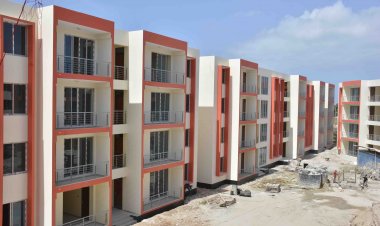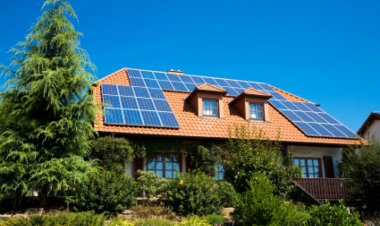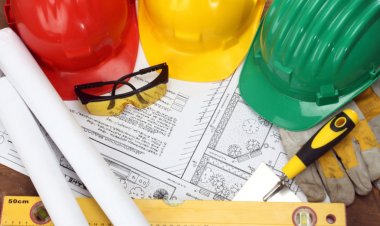Innovative Materials and Techniques Shaping the Future of Real Estate Construction
The industry's emphasis on sustainability, efficiency, and safety is driving the development of materials that go beyond conventional expectations.

The real estate market is still a vibrant, profitable industry that continues to influence our
towns and communities in the rapidly changing world of today.
As we learn more about real estate development, it becomes clear that, in this cutthroat
industry, being ahead of the curve is essential. It is crucial for both seasoned professionals and aspiring individuals hoping to establish a name for themselves in the property development industry to be aware of current trends and anticipate future developments.
Technology breakthroughs, changing consumer preferences, changing demographics, and environmental concerns will all have a big impact on the real estate market in the future.
Which means there are a lot of intriguing opportunities.
Developers can overcome obstacles and take advantage of opportunities by having a thorough
awareness of these elements. From sustainable practices to rising markets, we will examine the major innovative materials and techniques shaping the future of real estate construction.
This area will provide you with information about the most recent advancements influencing the real estate market, regardless of whether you are an experienced developer looking for ideas or a novice looking for direction on where to begin.
Come along with us as we explore the exciting realm of real estate development, where opportunity and innovation collide.
Listen to the latest episode of the African Real Estate Podcast here: https://spotifyanchor-web.app.link/e/JhXC6KFViIb
1. 3D-Printed Buildings: From Idea to Physical Reality
The idea of 3D printing has grown to include large-scale building projects in addition to tiny
prototypes. With materials like concrete, 3D-printed buildings are made layer by layer, cutting down on waste and construction time. Previously thought to be unfeasible, detailed and bespoke designs are now possible thanks to this creative technique. Building designers in the future may find 3D-printed structures to be an appealing alternative due to the possible cost and efficiency benefits.
2. The Intelligent Basis of Tomorrow's Structures: Smart Concrete
Though smart concrete is transforming the building business, traditional concrete has been a mainstay for generations. Real-time health monitoring of the structure is possible because of sensors implanted in smart concrete. With the use of these sensors, which can identify variations in temperature, stress, and strain, possible structural problems can be identified early on. This innovation enables more proactive and economical maintenance in addition to improving safety.
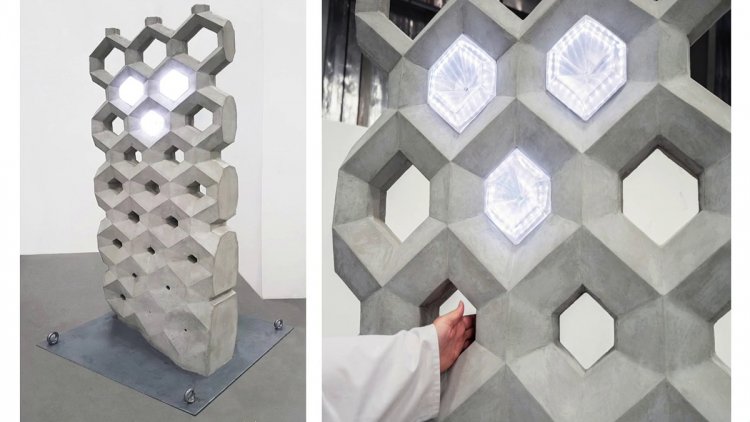 [Image of smart concrete. Photo/Courtesy]
[Image of smart concrete. Photo/Courtesy]
3. Self-Healing Materials: A Revolution in the Durability of Infrastructure
Imagine a substance that, in time, can self-heal fissures and other damage. In the realm of construction, self-healing materials are making this a reality. These materials include healing agent capsules inside of them that, when damaged, break free and repair the structure without the need for human assistance. In the long run, this makes construction more sustainable because it not only increases the lifespan of infrastructure and buildings but also lessens the need for frequent repairs and maintenance.
4. Eco-Friendly Construction: Making Room for Sustainable Alternatives
The building industry is moving away from conventional building materials and toward sustainable alternatives as environmental concerns grow. For instance, bamboo is becoming more and more popular as a sustainable and adaptable material. It grows quickly, is regenerative, and possesses exceptional strength qualities. Reclaimed wood and recycled steel are also being utilized to build environmentally friendly buildings that reduce the carbon footprint of the sector.
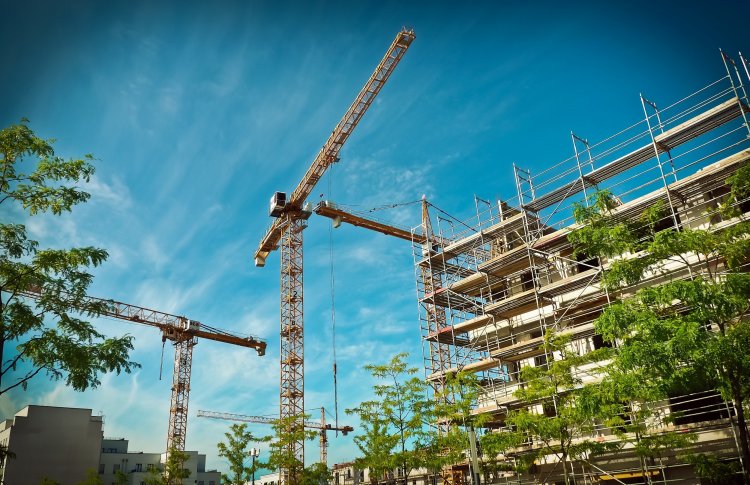 [Image of an eco-friendly construction. Photo/Courtesy]
[Image of an eco-friendly construction. Photo/Courtesy]
5. Algae-Infused Panels: Using Nature to Inform Architecture
Algae-infused panels provide a novel strategy for environmentally friendly buildings. Algae in these panels use photosynthesis to release oxygen and collect carbon dioxide. Algal-infused panels provide advantages for the environment, but they can also produce biomass for a range of uses. Not only can incorporating nature into building design improves sustainability, but it also makes cities healthier and livelier.
6. Phase-Change Materials: Effectively Controlling Indoor Temperatures
An essential component of building design is preserving a suitable interior temperature. Materials known as phase-change materials (PCMs) can both absorb and release heat when transitioning from one phase to another. By storing and releasing heat, PCMs in building materials assist in controlling indoor temperatures and lessening the need for conventional heating and cooling systems. As a result, buildings are more sustainable and use less energy.
7. Graphene: Creating Structural Durability
Again, graphene, which is made up of a single sheet of carbon atoms arranged in a hexagonal lattice, is well known for its exceptional strength and conductivity. Graphene is being used with different materials in construction to improve its mechanical qualities. Graphene adds strength and durability to materials like steel and concrete, enabling the construction of stronger and lighter buildings.
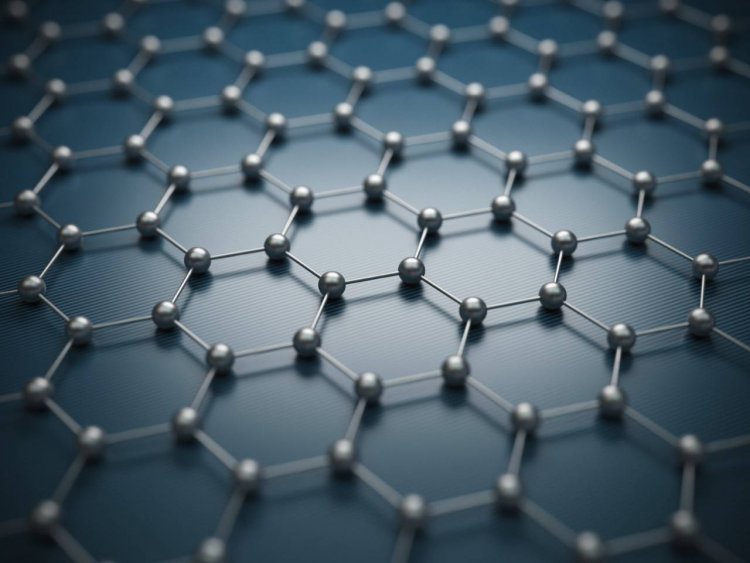 [Image of graphene. Photo/Courtesy]
[Image of graphene. Photo/Courtesy]
8. Reinforced Polymers with Carbon Fiber: Fortifying the Bases
The use of carbon-fiber reinforced polymers (CFRP) as a lightweight, very durable substitute for conventional building materials is growing in favor. By reinforcing concrete structures, these materials provide them with more flexibility and strength. In seismic regions, where construction must be lightweight but able to endure large stresses, CFRP is beneficial.
9. Aerogel Insulation: A Compact Thermal Innovation
Aerogels are materials that are lightweight and possess remarkable thermal insulation capabilities. By offering better insulation without significantly increasing the weight of the structure, aerogel insulation is being utilized in construction to increase energy efficiency. This material is very useful for retrofitting already-existing structures since it provides an effective solution to improve insulation without sacrificing structural integrity or space.
10. Transparent Aluminum: The Windows and Facades of the Future
Aluminum oxynitride, or transparent aluminum, is a strong ceramic substance that is transparent and has a similar strength to steel. This novel material, which allows for increased durability and security while letting in natural light, is being used in windows and facades. Transparent metal gives architects additional options for creating robust and aesthetically pleasing structures, in addition to promoting energy efficiency.
To summarise, as we enter a new era in building construction, the materials provided here are merely a taste of the innovative future that lies ahead. The industry's emphasis on sustainability, efficiency, and safety is driving the development of materials that go beyond conventional expectations. By adopting these innovations, construction professionals may not only design stronger, more resilient structures but also contribute to a more sustainable and environmentally conscious future. The use of these materials marks a paradigm shift in how we approach construction, ushering in a new era of creativity, efficiency, and responsibility in building design and development.
If you have a real estate press release or any other information that you would like featured on the African Real Estate Blog Post, do reach out to us via email at [email protected]

























